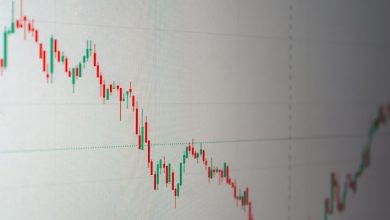Market Trends in Cryptocurrency: Analyzing the Bull and Bear Cycles

- Understanding the Bull and Bear Cycles in Cryptocurrency Markets
- Analyzing the Market Trends of Cryptocurrency
- Exploring the Impact of Bull and Bear Cycles on Cryptocurrency Prices
- Strategies for Investors to Navigate Bull and Bear Markets in Cryptocurrency
- The Role of Market Psychology in Cryptocurrency Bull and Bear Cycles
- Comparing Historical Data to Predict Future Bull and Bear Markets in Cryptocurrency
Understanding the Bull and Bear Cycles in Cryptocurrency Markets
Cryptocurrency markets are known for their volatile nature, with prices often experiencing significant fluctuations. Understanding the bull and bear cycles in these markets is essential for investors looking to make informed decisions.
During a bull cycle, prices of cryptocurrencies tend to rise steadily over a prolonged period. This is typically driven by positive market sentiment, increased investor interest, and overall optimism in the market. Investors who buy during a bull cycle often see substantial returns on their investments as prices continue to climb.
Conversely, a bear cycle is characterized by falling prices and negative market sentiment. This can be triggered by various factors such as regulatory crackdowns, security breaches, or a general lack of confidence in the market. Investors who fail to recognize a bear cycle may incur losses if they continue to hold onto their investments as prices decline.
It is crucial for investors to be able to identify the signs of a bull or bear cycle in cryptocurrency markets to make informed decisions about when to buy or sell. Technical analysis, market trends, and news developments can all provide valuable insights into the current market conditions.
By staying informed and understanding the bull and bear cycles in cryptocurrency markets, investors can navigate the volatile landscape more effectively and potentially capitalize on the opportunities presented by these market trends.
Analyzing the Market Trends of Cryptocurrency
Cryptocurrency market trends are constantly evolving, influenced by various factors such as investor sentiment, regulatory developments, and technological advancements. Analyzing these trends can provide valuable insights for investors looking to navigate the volatile market effectively.
One key aspect of analyzing market trends in cryptocurrency is understanding the concept of bull and bear cycles. The bull cycle is characterized by rising prices, increased investor optimism, and overall market growth. On the other hand, the bear cycle is marked by falling prices, decreased investor confidence, and market contraction.
During a bull cycle, investors are more willing to take risks and invest in cryptocurrencies, driving up prices and creating a positive feedback loop. This can lead to rapid and sometimes unsustainable price increases, often resulting in a market correction or crash. On the contrary, a bear cycle is typically associated with fear, uncertainty, and a general lack of confidence in the market.
By studying past bull and bear cycles, analysts can identify patterns and trends that may help predict future market movements. Recognizing when a market is entering a bull or bear cycle can be crucial for investors seeking to capitalize on opportunities or protect their assets during periods of market volatility.
Overall, analyzing market trends in cryptocurrency requires a combination of technical analysis, fundamental research, and an understanding of market psychology. By staying informed and being aware of the various factors influencing market trends, investors can make more informed decisions and navigate the cryptocurrency market with greater confidence.
Exploring the Impact of Bull and Bear Cycles on Cryptocurrency Prices
Cryptocurrency prices are known to be highly volatile, often experiencing significant fluctuations. Understanding the impact of bull and bear cycles on these prices is crucial for investors and traders in the market.
During bull cycles, cryptocurrency prices tend to rise steadily, driven by increased demand and positive market sentiment. This uptrend can lead to significant gains for investors who capitalize on the rising prices. However, it is essential to exercise caution during bull cycles, as the market can be susceptible to sudden corrections.
On the other hand, bear cycles are characterized by declining prices and negative market sentiment. During these periods, investors may experience losses as the value of their investments decreases. It is crucial to have a risk management strategy in place to mitigate potential losses during bear cycles.
Analyzing the historical data of bull and bear cycles can provide insights into the patterns and trends in the cryptocurrency market. By understanding the impact of these cycles on prices, investors can make informed decisions about when to buy or sell their assets.
Overall, the interplay between bull and bear cycles plays a significant role in shaping the cryptocurrency market. By staying informed and monitoring market trends, investors can navigate these cycles effectively and optimize their investment strategies for long-term success.
Strategies for Investors to Navigate Bull and Bear Markets in Cryptocurrency
Investors in the cryptocurrency market need to be equipped with strategies to navigate both bull and bear cycles effectively. During bull markets, it is crucial to capitalize on the upward trend by diversifying investments across different cryptocurrencies. This can help mitigate risks and maximize potential returns. Additionally, setting realistic profit targets and regularly monitoring market trends can enable investors to make well-informed decisions.
On the other hand, during bear markets, investors should consider adopting a defensive approach to protect their investments. This may involve reducing exposure to high-risk assets and increasing holdings in stable cryptocurrencies or fiat currencies. Implementing stop-loss orders can also help limit potential losses in a declining market. Furthermore, staying informed about regulatory developments and market sentiment can provide valuable insights for making strategic investment decisions.
Overall, successful navigation of bull and bear markets in cryptocurrency requires a combination of proactive risk management, strategic diversification, and continuous market analysis. By staying disciplined and adaptable in their investment approach, investors can position themselves to take advantage of market opportunities while minimizing potential downside risks.
The Role of Market Psychology in Cryptocurrency Bull and Bear Cycles
The role of market psychology plays a significant part in determining the bull and bear cycles in the cryptocurrency market. Market psychology refers to the collective sentiment and behavior of traders and investors, which can heavily influence the direction of prices.
During bull cycles, market participants are generally optimistic and confident in the potential of cryptocurrencies, leading to increased buying pressure and rising prices. This positive sentiment can create a self-reinforcing cycle as more investors jump on the bandwagon, further driving up prices.
Conversely, bear cycles are characterized by pessimism and fear, causing prices to decline as investors rush to sell their holdings. This negative sentiment can create a downward spiral as more selling pressure leads to further price drops.
Understanding market psychology is crucial for predicting and navigating through cryptocurrency market cycles. By analyzing sentiment indicators, such as social media trends and trading volumes, investors can gain insights into the prevailing mood of the market and make more informed decisions.
In conclusion, market psychology plays a vital role in shaping the bull and bear cycles of the cryptocurrency market. By being aware of the emotional drivers behind market movements, investors can better position themselves to capitalize on opportunities and mitigate risks.
Comparing Historical Data to Predict Future Bull and Bear Markets in Cryptocurrency
By comparing historical data, investors and analysts can gain insights into potential future bull and bear markets in the cryptocurrency market. This analysis involves looking at past trends, patterns, and market cycles to make informed predictions about the direction of the market.
One key metric that is often used to predict bull and bear markets is the price movement of cryptocurrencies over time. By studying how prices have fluctuated in the past, analysts can identify patterns that may indicate whether the market is entering a bullish or bearish phase.
Another important factor to consider when analyzing historical data is the trading volume of cryptocurrencies. High trading volume during a particular period may suggest increased market activity and interest, which could be a sign of a potential bull market. On the other hand, low trading volume may indicate a lack of interest and a possible bear market.
Additionally, studying market sentiment through social media, news articles, and other sources can provide valuable insights into investor behavior and market psychology. By analyzing the sentiment surrounding cryptocurrencies during previous bull and bear markets, analysts can better understand how emotions drive market movements.
Overall, comparing historical data to predict future bull and bear markets in cryptocurrency requires a comprehensive analysis of various factors, including price movements, trading volume, and market sentiment. By leveraging this information, investors can make more informed decisions and better navigate the volatile cryptocurrency market.



